BEL APPART LE CANNET.COM
--------------------------------------------------------------------------------------------
RENTAL OF FURNISHED APARTMENTS
IN THE CITY OF CANNET

BEL APPART LE CANNET.COM
--------------------------------------------------------------------------------------------
RENTAL OF FURNISHED APARTMENTS
IN THE CITY OF CANNET

Belappartlecannet.com

Discover a light, flavorful, and home-style cuisine...
The Côte d’Azur — this Mediterranean gem nestled between the sea and the mountains — shines not only for its breathtaking landscapes and sunny climate. It also stands out for its rich and fragrant cuisine, deeply rooted in Provençal and Niçoise traditions. Here, every dish tells a story, reflects a region, and expresses a deep love for local products.
Let me introduce you to the must-try dishes of Provençal cuisine, which you simply cannot miss during your stay in our beautiful region.
Culinary specialties of the Côte d’Azur:
• Socca (chickpea flour pancake)
• Pissaladière (caramelized onion and anchovy tart)
• Petits Farcis (stuffed vegetables – zucchini, tomatoes, peppers)
• Savory Swiss Chard Tart (“Tarte aux blettes”)
• Niçoise Daube (slow-cooked Provençal beef stew with red wine)
• Zucchini Flower Fritters (“Beignets de fleurs de courgette”)
• Pistou Soup (vegetable soup with basil-garlic pesto)
• Pan Bagnat (Niçoise sandwich with tuna, vegetables, and olive oil)
• Ratatouille (stewed vegetables – eggplant, zucchini, peppers, tomatoes)
• Panisses (patties or fries made from chickpea flour)
Niçoise Salad:
Niçoise salad is a classic dish from Provençal cuisine, originating in Nice, in the southeast of France. It’s a fresh and colorful salad, often served as a starter, and perfect for hot summer days.

Traditional Ingredients of a Niçoise Salad:
Ripe tomatoes
Hard-boiled eggs
Bell peppers (optional)
Black olives (preferably Niçoise olives)
Anchovies or sometimes tuna (canned or fresh)
Green beans (thin and blanched)
Potatoes (small, boiled)
Red onions or shallots
Fresh basil
Capers
Olive oil for dressing
Vinegar (usually red wine vinegar or balsamic)
Salt and pepper
Socca:
Another Niçoise Treasure!
This is a very popular culinary specialty in Nice, but also enjoyed in other parts of the French Riviera.
Socca is a type of thin pancake or flatbread made from chickpea flour, water, olive oil, and salt. It's baked in a very hot oven until the edges become crispy while the center remains soft and tender.

How is it eaten?
Traditionally, socca is enjoyed hot, straight out of the oven.
It's torn into irregular pieces, often by hand.
It's generously sprinkled with black pepper.
It’s a kind of simple snack or appetizer, perfect with a glass of wine or as an apéritif.
Pissaladière:
Another iconic specialty from the Nice region, and also widely enjoyed throughout Provence. It’s a kind of savory tart, somewhat similar to pizza, but with its own distinct character.
It’s made with a bread dough or pizza dough base, generously topped with a sweet onion compote—slowly caramelized—along with anchovy fillets and black olives.
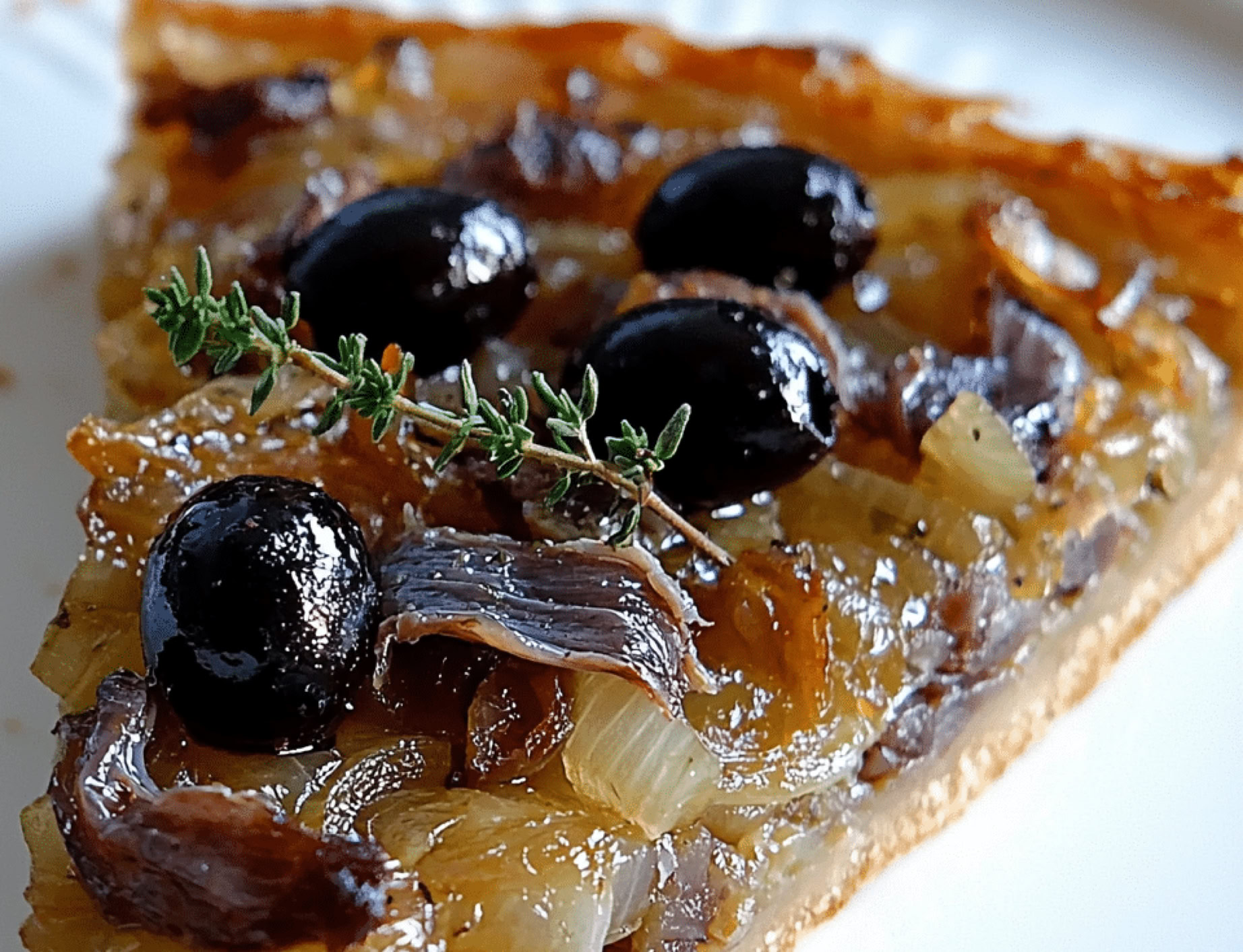
Special Features:
The slow cooking of the onions is essential to achieve their sweetness and melting texture.
The salty, briny flavor of the anchovies contrasts perfectly with the sweetness of the onions.
The crust is crispy and golden, but not too thick.
Stuffed vegetables: Petits farcis
Another tasty classic of Niçoise cuisine, both rustic, fragrant, and full of sunshine.
Stuffed vegetables (or lou farcit in Niçard) are summer vegetables—often zucchini, tomatoes, onions, peppers, eggplants—that are hollowed out and stuffed with a mixture of minced meat, bread crumbs, garlic, onion, aromatic herbs, then baked in the oven.
They are served hot, warm, or even cold, as a main dish or as an appetizer.
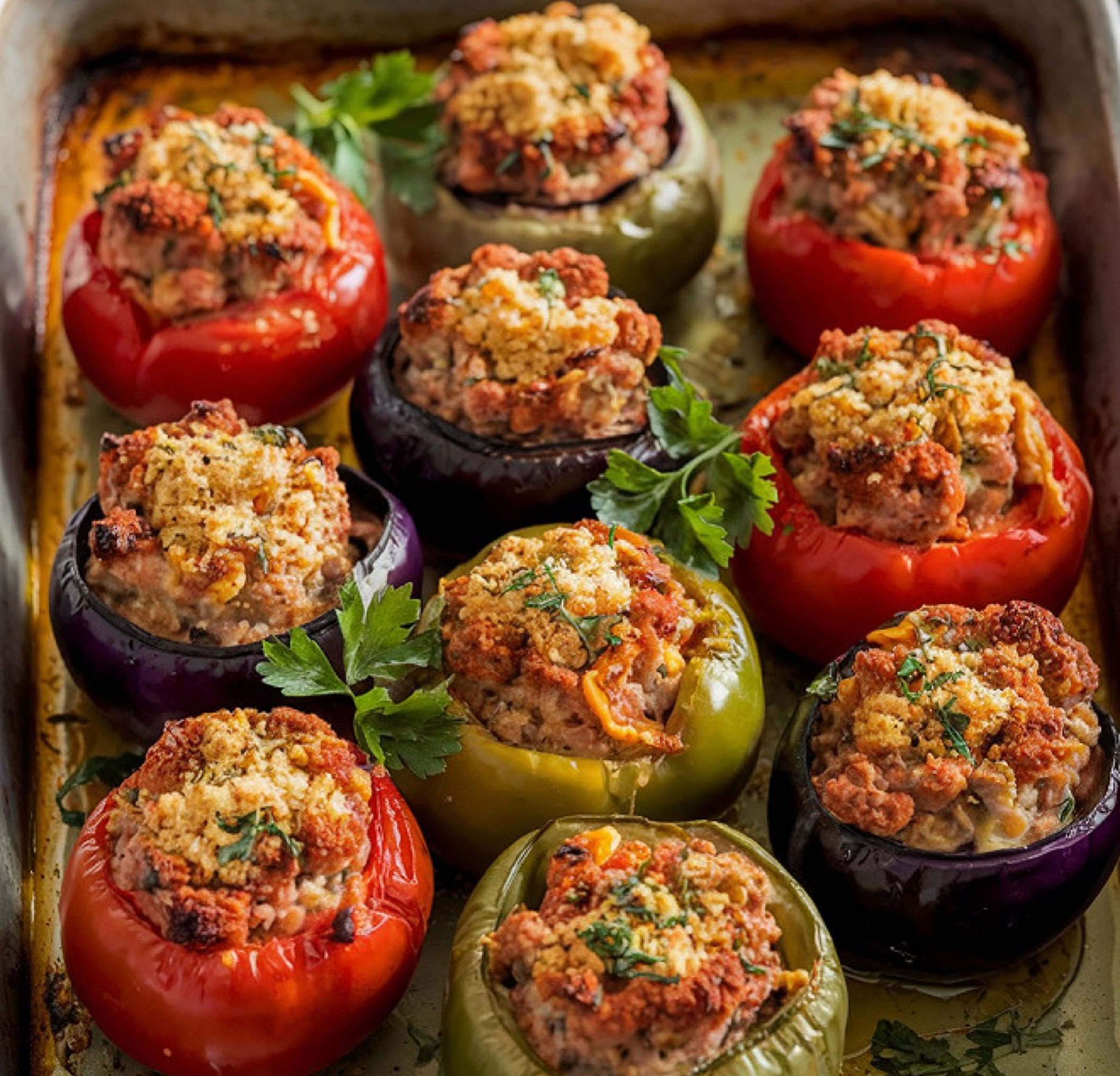
Traditional stuffing:
Minced meat (often a mix of beef, veal, pork, or sometimes leftover meat)
Flesh of the hollowed-out vegetables
Stale bread crumbs soaked in milk
Egg (to bind)
Garlic and onion finely chopped
Parsley, thyme, sometimes basil
Salt, pepper, a drizzle of olive oil
Savory Swiss chard tart:
Another marvel of Niçoise cuisine, rustic, simple, and deeply local. Swiss chard (or blettes) is one of the most used vegetables in Niçoise culinary tradition, both in savory and sweet versions.
It’s a rustic tart made with shortcrust pastry or homemade dough, filled with a mixture of Swiss chard, onions, sometimes rice or grated cheese, all well seasoned and baked in the oven.
It is generally vegetarian, but some variations include a bit of bacon or egg.
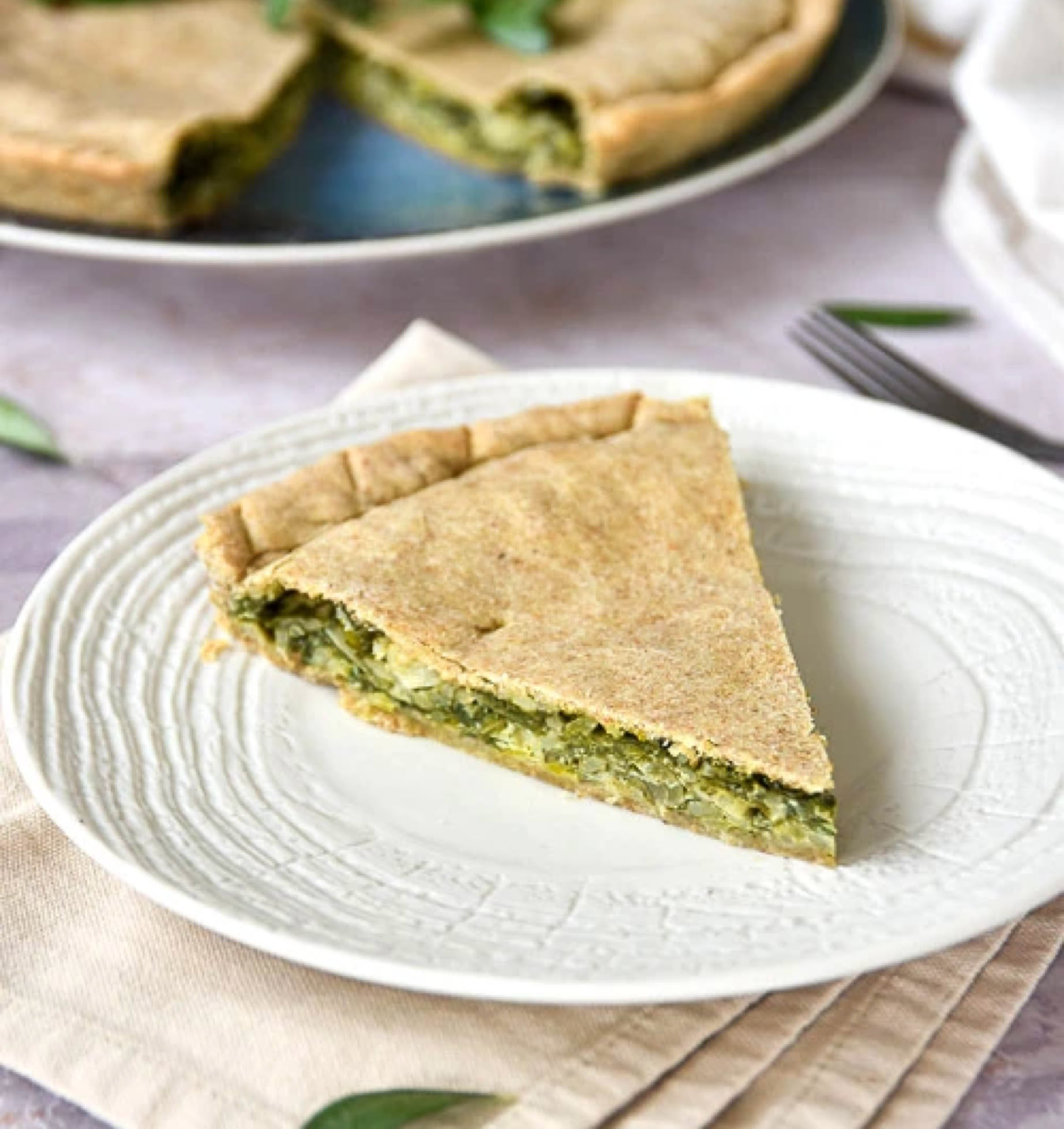
Typical ingredients:
Swiss chard (mostly the leaves, sometimes a bit of the stalks)
Onions
Olive oil
Grated cheese (often Parmesan, Pecorino, or Gruyère)
Eggs
Rice (cooked, optional)
Salt, pepper, nutmeg
Shortcrust pastry (homemade or store-bought)
Daube Niçoise:
This is the iconic slow-cooked dish of Nice, deeply rooted in Provençal cuisine, both generous, comforting, and full of character.
Daube Niçoise is a beef stew simmered in red wine, flavored with garlic, thyme, bay leaf, onions, carrots, and often black olives. It is cooked slowly for several hours until the meat is tender.
It is a traditional popular dish, often prepared the day before to be reheated (and even better the next day!
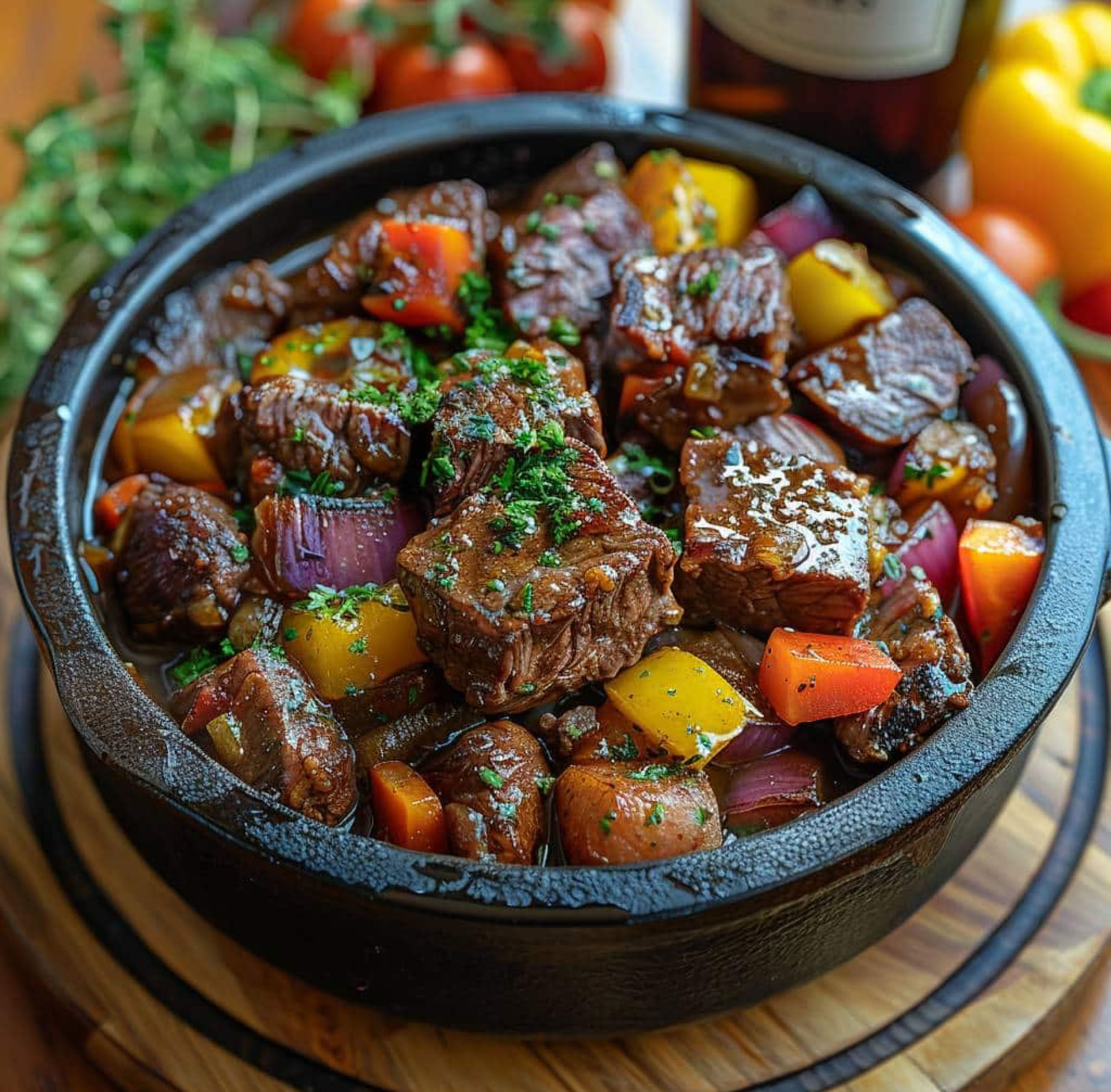
Traditional ingredients:
Braising beef (chuck, shoulder, cheek, shin)
Full-bodied red wine (Côtes du Rhône, Provence wine, etc.)
Onions
Garlic
Carrots
omatoes (or tomato paste)
Black olives (preferably Niçoise olives)
Thyme, bay leaf, rosemary
Orange peel (zest, optional but typical)
Olive oil
Salt, pepper
Zucchini flower fritters:
Here is one of the most delicate and iconic specialties of Niçoise and Provençal cuisine.
It’s a light, crispy, and fragrant dish, often served as a starter, an appetizer, or at Provençal markets, freshly fried and still hot.
These are fresh zucchini flowers coated in a light batter, then fried in olive oil or vegetable oil until golden and crispy on the outside, tender on the inside.
A true delight!

Traditional ingredients:
Fresh zucchini flowers (male flowers, which do not produce zucchinis)
Flour
Water (or sparkling water) — for a lighter batter
Egg (sometimes, depending on the recipe)
Salt
Olive oil or frying oil
Pistou soup:
This is a summer soup, fragrant and nourishing, where seasonal vegetables meet the incomparable aroma of pistou, the Provençal cousin of Italian pesto.
It’s a vegetable soup enriched with pasta and finished, just before serving, with a generous spoonful of pistou—a sauce made from basil, garlic, and olive oil (sometimes with cheese).
Traditionally, it contains no meat or meat broth: it’s a healthy, vegetarian, and friendly dish.
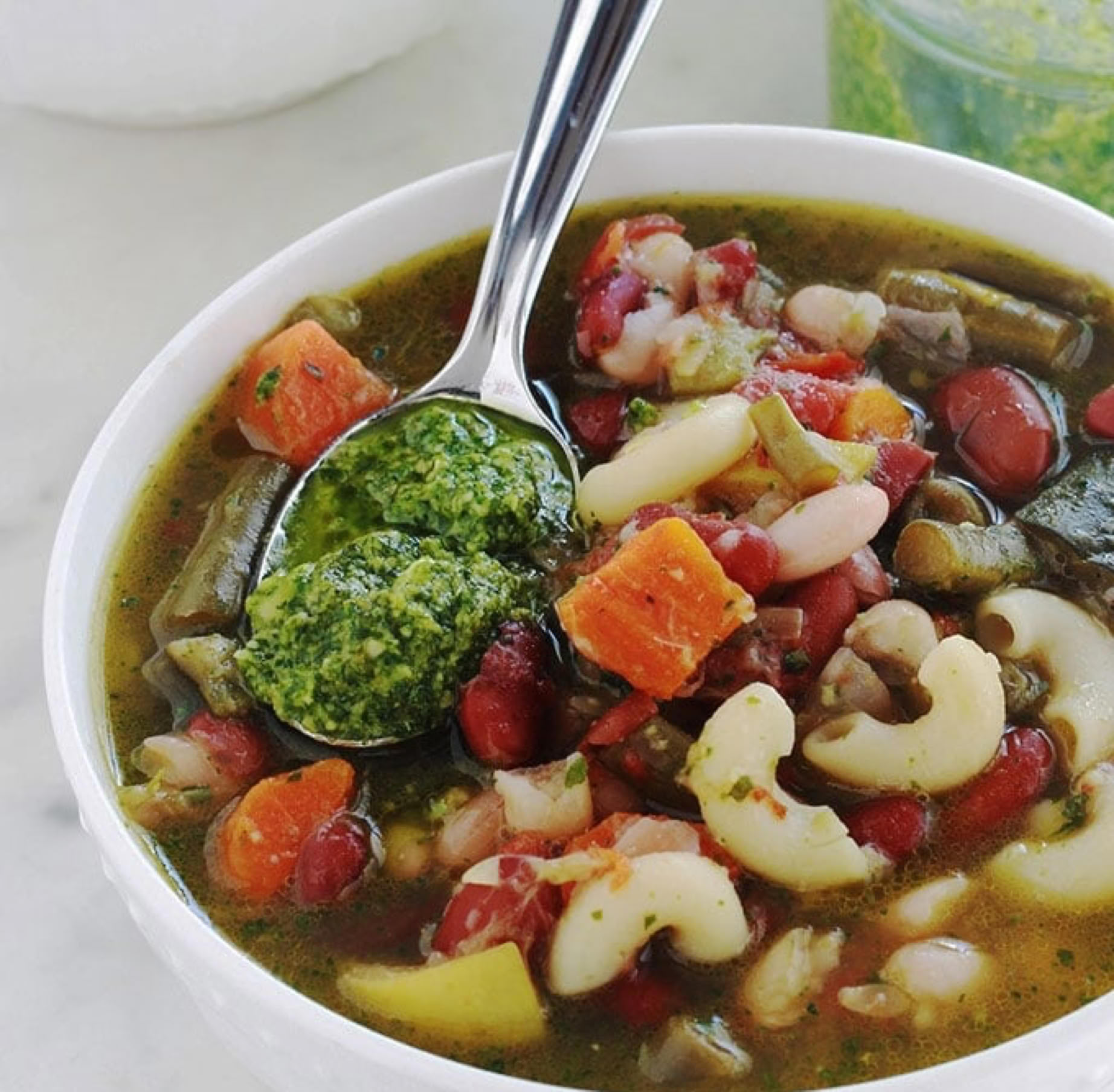
Traditional ingredients:
For the soup:
White beans and green beans (fresh or dried depending on the season)
Zucchini
Potatoes
Ripe tomatoes (peeled or not)
Carrots
Onions
Short pasta (such as small shells, small macaroni, etc.)
Water, salt, pepper, olive oil
For the pistou:
Fresh basil in large quantity
Garlic
Olive oil
Grated Parmesan (or Gruyère, or Pecorino depending on the family)
Pan bagnat:
It’s an icon of Niçoise cuisine, simply the essence of the Niçoise salad... in a bread! A true street food, practical, complete, fresh, and deeply Mediterranean.
"Pan bagnat" comes from the Niçard phrase "pan banhat," which means "wet bread." Originally, it was stale bread that was "wetted" with olive oil to make it tasty again.
It’s a round bread (like country bread or pain bagnat bread) cut in half, filled with the ingredients of Niçoise salad, and especially without mayonnaise to stay true to tradition.
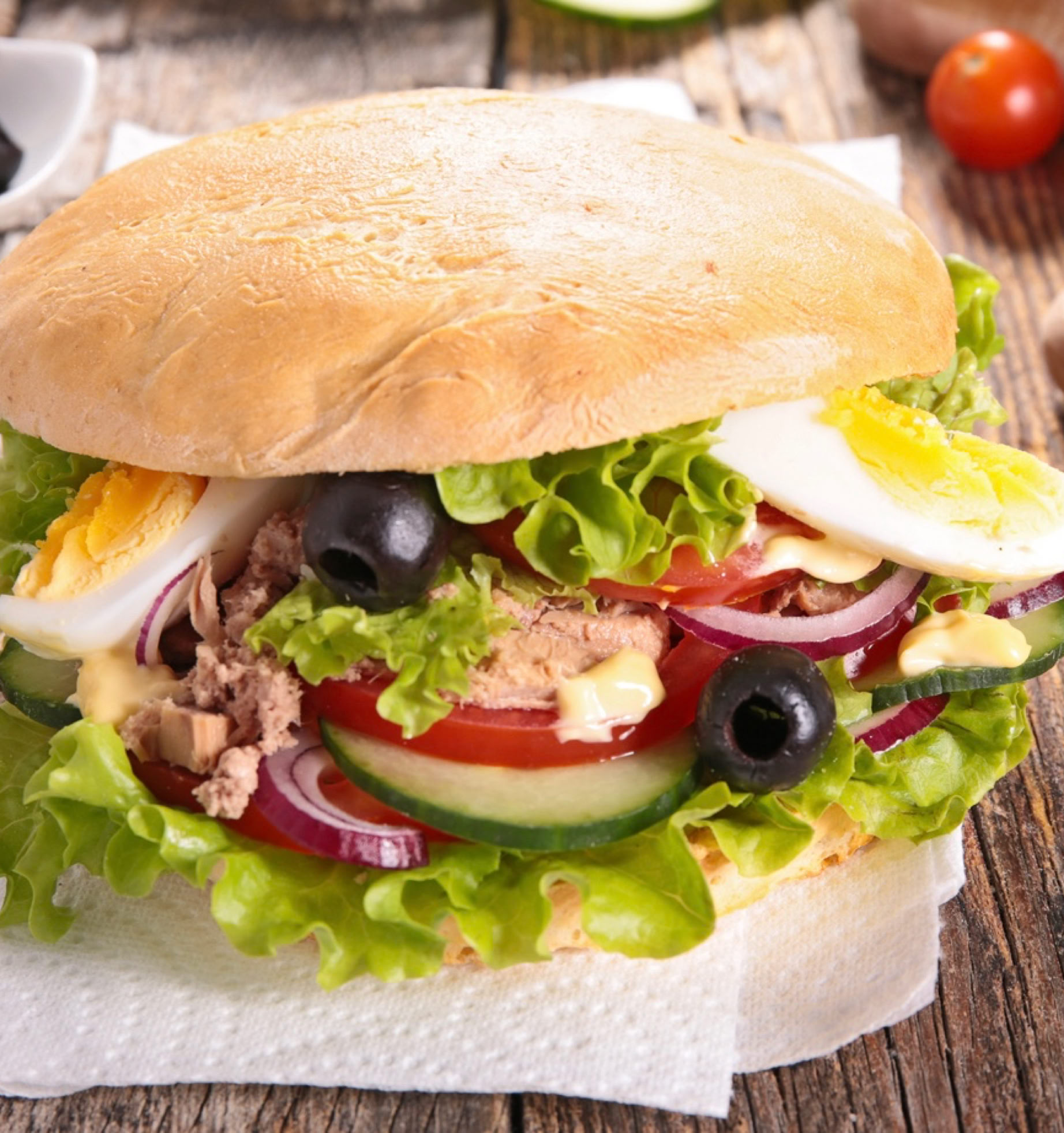
Traditional (authentic) ingredients:
Round bread, slightly firm, rubbed with garlic (or not)
Tuna in oil or anchovies (or both)
Ripe tomatoes
Radishes
Green bell pepper (thinly sliced)
Hard-boiled egg
Small purple artichokes (optional but traditional)
Black Niçoise olives
Fresh basil
Red onion (or mild white onion)
Olive oil
Salt, pepper
❌ Never vinegar, or mayonnaise! (That’s heresy for a true pain bagnat 😄)
Ratatouille:
It is one of the most iconic dishes of Provençal and Niçoise cuisine: a summer vegetable stew, full of sunshine, Mediterranean aromas, and rustic know-how.
It’s a slow-cooked dish made with typically Mediterranean vegetables, cooked separately then combined to preserve their flavors and textures. It can be served hot, warm, or cold, as a main dish or a side.
What I love most is enjoying it cold with hot white rice.
A true delight and an irresistible hot/cold sensation!

Traditional ingredients:
Tomatoes
Zucchini
Eggplants
Bell peppers (red and green)
Onions
Garlic
Herbes de Provence (thyme, bay leaf, rosemary)
Fresh basil (often added at the end of cooking)
Olive oil, salt, pepper
The Southern ratatouille is made with care; each vegetable is respected and never boiled together from the start. It’s this method that makes all the difference between a bland ratatouille and a rich, slow-cooked one.
Panisses :
Panisses are patties or fries made from chickpea flour, a staple ingredient in Mediterranean cuisine.
The dough is prepared by cooking chickpea flour in salted water until it thickens to a polenta-like consistency.
Once cooled, it is sliced into rounds or ovals and then fried until a golden, crispy crust forms on the outside, while the inside remains soft and tender.
Panisses are best enjoyed hot, often served as an appetizer or side dish. They can be served plain with a sprinkle of salt, or flavored with aromatic herbs such as rosemary or thyme.
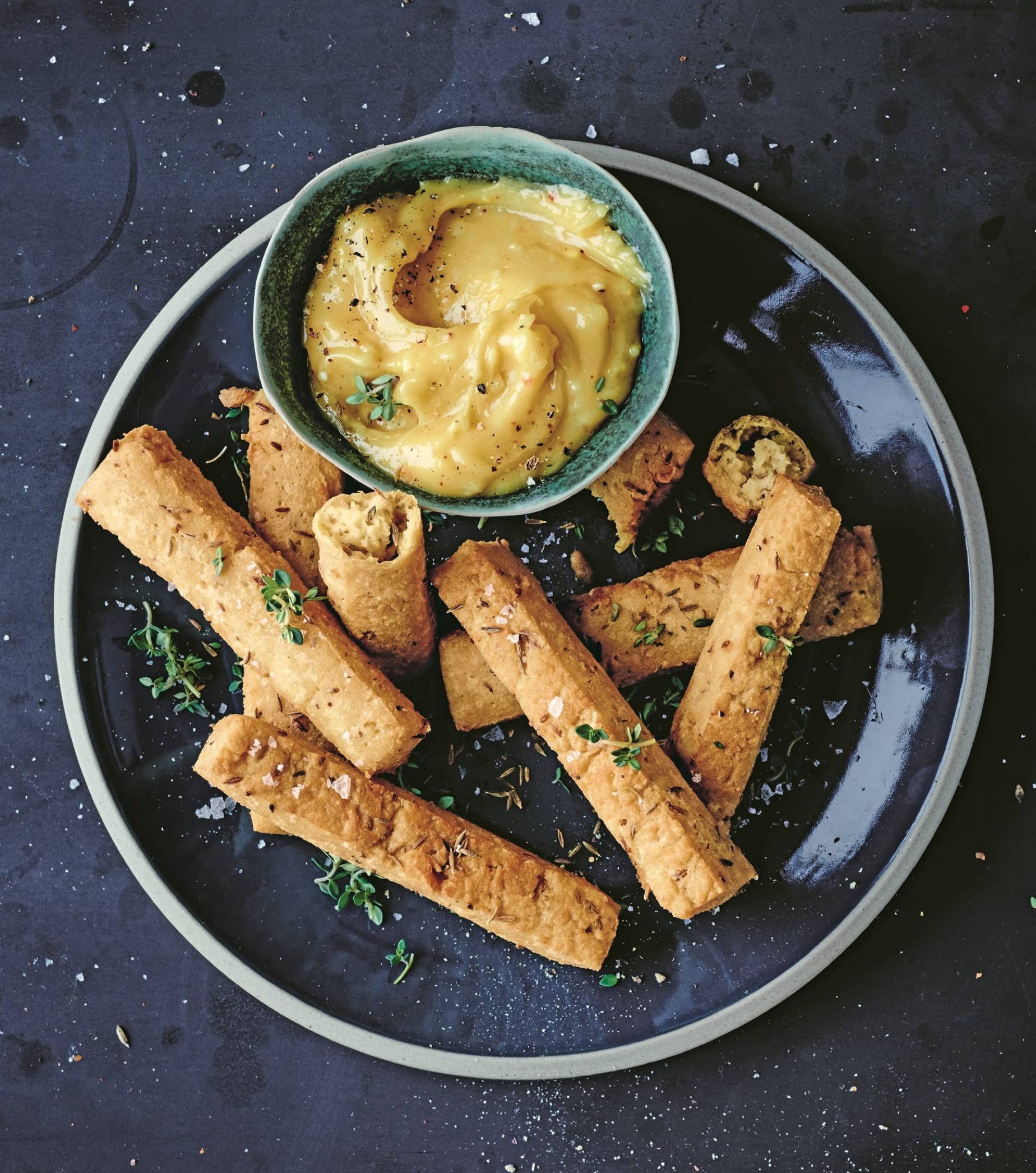
Traditional ingredients:
Chickpea flour
Water
Herbes de Provence (rosemary, thyme, oregano) – Optional
Olive oil, salt, pepper
Bon appétit! 😄 🍽️
Ce site web utilise les cookies. Veuillez consulter notre politique de confidentialité pour plus de détails.